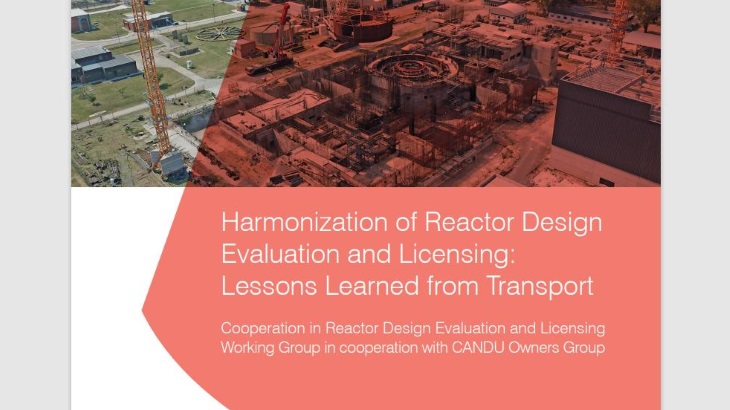Today, nuclear reactor designs proposed for deployment in a country are assessed by national regulators according to their own regulations and processes. A full assessment is undertaken irrespective of whether a design has undergone an extensive review and received its certification in another country. This national approach to the licensing of reactors results in design changes being required, incurring additional costs, time and regulatory burden, as well as the complexities and loss of efficiencies associated with managing multiple designs of the same basic reactor model.
In its report, Harmonisation of Reactor Design Evaluation and Licensing: Lessons Learned from Transport, produced in cooperation with the Candu Owners Group, CORDEL calls on the traditional model for nuclear deployment "to be changed towards the international standardisation of reactor designs and harmonisation of approaches to licensing". This would result in "improved economics, regulatory efficiency, and enhanced design efficiency and safety", it says.
Commenting on the report, World Nuclear Association Director General Sama Bilbao y León said: "The streamlining of international standards and licensing processes for new nuclear reactors is urgent and essential. This is particularly important for the successful deployment of SMRs, whose business case relies on the establishment of global markets and supply chains."
Nuclear transport
The CORDEL report draws on the experience of transporting radioactive material, which has been carried out under a harmonised regulatory framework for nearly 60 years.
Since 1961, when the International Atomic Energy Agency first published its Regulations for the Safe Transport of Radioactive Material (SSR-6), there has been over half a billion packages shipped worldwide, with no case of a transport incident that has caused a significant radiological hazard to people or the environment. These nuclear transport requirements are sufficiently harmonised across international borders such that minimal design changes to packages are required to meet specific national regulations, and that the technical reviews of a lead competent authority in one country can be straightforwardly validated by other competent authorities in other countries.
The report states: "Those tasked with devising the early nuclear transport regulations were able to put aside national differences and agree on common quantitative performance and testing criteria and terminology," which laid the foundations for today’s nuclear transport regulations. It goes on to recommend that an international framework should be established for the harmonisation of reactor design evaluation and licensing. At the heart of the framework would be a multinational regulatory advisory panel, composed of experts from national regulatory bodies, empowered by an international agreement.
"Through the example of the Regulations for the Safe Transport of Radioactive Material, the new report illustrates that it is possible to effectively achieve harmonisation in international nuclear regulation," Bilbao y León said. "The vision and leadership of the authors of this regulation recognised the importance of prioritising the compatibility between national and international regulations as a necessity for the global nuclear energy industry."





_47120.jpg)

_23621.jpg)






